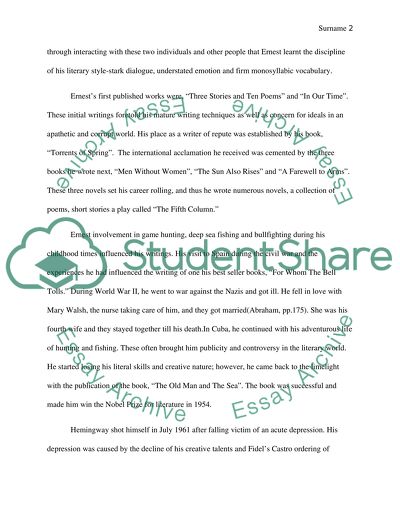Cite this document
(“Ernest Hemingway's Literary Works Essay Example | Topics and Well Written Essays - 1500 words”, n.d.)
Retrieved de https://studentshare.org/literature/1434630-ernest-hemingway-literary-works
Retrieved de https://studentshare.org/literature/1434630-ernest-hemingway-literary-works
(Ernest Hemingway'S Literary Works Essay Example | Topics and Well Written Essays - 1500 Words)
https://studentshare.org/literature/1434630-ernest-hemingway-literary-works.
https://studentshare.org/literature/1434630-ernest-hemingway-literary-works.
“Ernest Hemingway'S Literary Works Essay Example | Topics and Well Written Essays - 1500 Words”, n.d. https://studentshare.org/literature/1434630-ernest-hemingway-literary-works.


